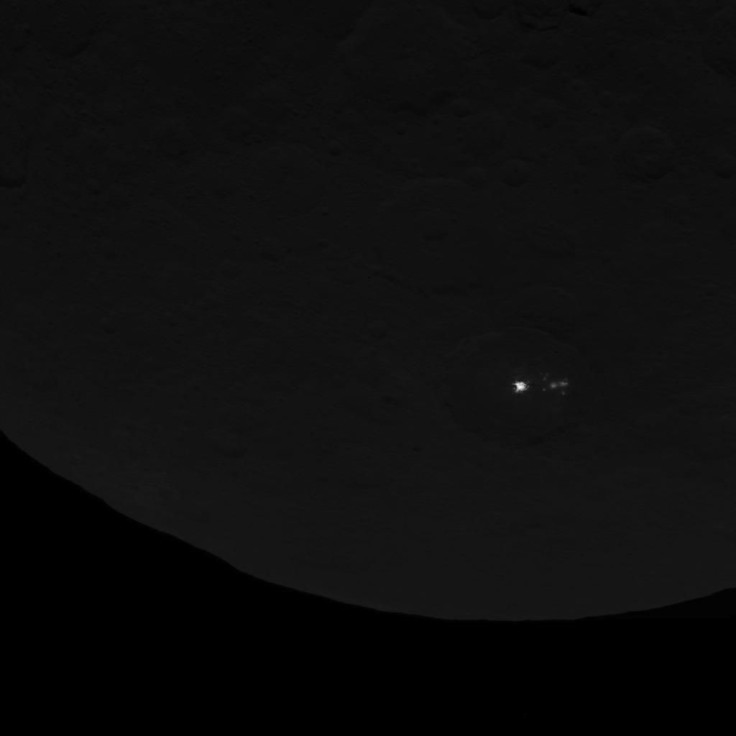NASA's Dawn Captures Ceres Pyramid, Bright Spots In New Photos...And Of Course People Think It's Proof Of UFOs

There's something mysterious happening on the dwarf planet Ceres. NASA scientists are grasping at straws trying to figure out what they're seeing, and the Dawn space probe launched in 2007 continues to deliver baffling photographs. The Ceres lights are perfect fodder for conspiracy, speculation and wild theories about what is responsible for the two bright points in every photo of Ceres.
The Ceres bright spots are clearly visible in every photo of the dwarf planet taken by Dawn. What started out as just two spots have evolved into a group of bright dots now that Dawn is closer to Ceres. Some spots are brighter than others and there's no certainty about what's behind the spots. Dawn is in orbit around the dwarf planet at an altitude of 4,400 kilometers (2,700 miles) according to NASA.
NASA guesses it's something reflective -- like ice or a salt deposit -- but hasn't ruled out the possibility that the lights could be a volcano, geyser or rock in its open vote. The largest bright spot area measures around 6 miles in diameter inside a crater that's 55 miles wide.
"The surface of Ceres has revealed many interesting and unique features. For example, icy moons in the outer solar system have craters with central pits, but on Ceres central pits in large craters are much more common," Carol Raymond, deputy principal investigator for the Dawn mission, said in a statement.
Scientifically solving the mystery of Ceres' bright spots should be exciting enough, but there are some people who want even more intrigue. Some alien enthusiasts believe that pyramid-like objects can be seen among the bright spots. There are some bold leaps of logic that rival the notion that Jon Snow's eyes changed color for a split second before the screen went dark at the end of the "Game of Thrones" Season 5 finale. Dawn has found a three-mile-high "pyramid" mountain, which has fired up the Internet sleuth machine and fueled further speculation.

Adam Frank, an astrophysics professor at the University of Rochester, penned a column about the "agony of ignorance" for NPR. Frank describes how difficult it is to work in science and know that the answer to a question is out there, somewhere, but it may be out of reach. "Of course, its overwhelmingly probable that alien artifacts are exactly what the bright spots are NOT. But the real point here is that we just don't know," Frank said.
Luckily, the Ceres bright spot mystery could have answers in the near future. By early August, Dawn will enter its third orbit at an altitude of 900 miles from Ceres' surface, which means those bright spots will be clearer than ever.
© Copyright IBTimes 2025. All rights reserved.





















